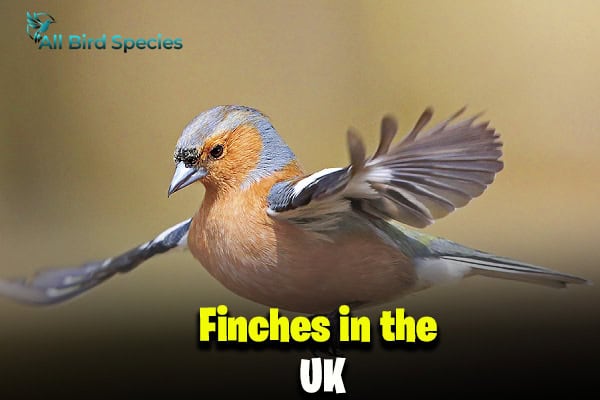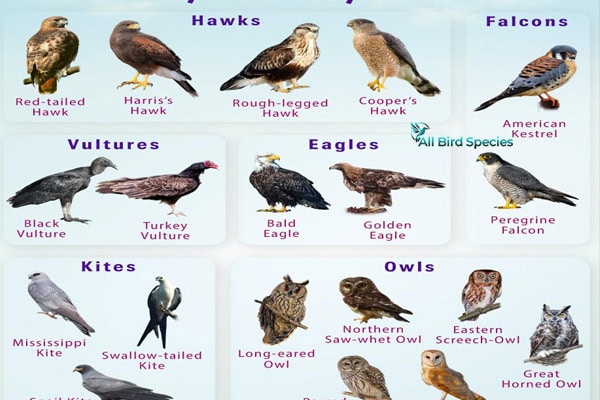Spotting Owls in Louisiana (8 Species With Pictures)
Ever wondered about the owls living in Louisiana? Louisiana is home to eight unique owl species. These birds are key to our ecosystem’s balance. They also help control pests like the invasive Nutria.
Exploring Louisiana’s wildlife, we’ll learn about each owl species. We’ll use beautiful pictures to help us identify them. Let’s discover the great horned owl, the barn owl, and others that live in our state.
Common Owls Found in Louisiana
| Owl Species | Preferred Habitat | Unique Characteristics |
|---|---|---|
| Great Horned Owl | Forests, rural areas | Largest owl in North America |
| Barn Owl | Open fields, agricultural regions | Widely distributed globally |
| Burrowing Owl | Open areas | Easy to observe in the wild |
| Eastern Screech Owl | Wooded areas | Entirely nocturnal |
| Northern Saw-Whet Owl | Dense forests | Elusive, small size |
| Barred Owl | Swamps, mature forests | Known for distinctive call |
| Long-Eared Owl | Grasslands, marshes | Primarily feeds on voles |
| Short-Eared Owl | Open fields, wetlands | Adapted for hunting in open spaces |
1. Great Horned Owl
• Scientific name: Bubo virginianus
• Size: Length 18-25″, wingspan 36-60″
• Weight: 2-5.5 lbs
• Lifespan: Up to 20 years wild, 50 captive
• Diet: Small-medium mammals, birds, reptiles
The Great Horned Owl in Louisiana is the biggest owl Species. It amazes bird lovers with its unique features and strong presence. Its distinctive tufted horns and powerful build make it a top predator in many habitats.

Physical Characteristics
The Great Horned Owl is quite large. It measures 18.1 to 24.8 inches long. Its wingspan is 39.8 to 57.1 inches, with females being slightly bigger.
These owls weigh between 1,224 to 1,608 grams. Their wings are small for their weight, allowing for quick flight. Their legs, feet, and talons are strong for catching prey.
Plus, Their foot span is about 20 cm when spread wide. This shows their strength and precision in hunting. Their tail length is 175 to 252 mm, helping with their aerial skills.
Habitat and Hunting Behavior
The Great Horned Owl is very adaptable. It lives in many places, like forests and woodlands. They hunt at twilight or during the day, catching small rodents and bigger mammals.
They play a big role in controlling rodent populations. This shows their importance as top predators in their ecosystems.
2. Barn Owl
• Scientific name: Tyto alba
• Size: Length 13-15 inches, wingspan 31-37 inches
• Weight: 0.9-1.4 pounds
• Lifespan: Up to 4 years in the wild, 20 in captivity
• Diet: Small mammals, primarily rodents
The Barn Owl is known for its striking looks and interesting behaviors, especially in Louisiana. Its nesting habits and migratory patterns show how it has adapted to different places.

Nesting Habits in Louisiana
In Louisiana, the Barn Owl nests in places made by humans like barns and silos. This choice helps them do well and hunt nearby. They like open areas with trees for hunting, making these spots great for nesting.
During the day, they hide in tree holes or old barns. This keeps them safe from predators.
Migratory Patterns and Year-Round Presence
The Barn Owl’s migration patterns are quite flexible. Even though many move south for winter, Louisiana is part of their year-round home. So, we can see Barn Owls all year in the state.
This shows how widespread they are, letting us enjoy their beauty any time of year.
3. Burrowing Owl
• Scientific name: Athene cunicularia
• Size: Length 7.5-11 inches, wingspan 20-24 inches
• Weight: 4.9-8.5 ounces
• Lifespan: Up to 9 years in the wild, 10 in captivity
• Diet: Insects, small mammals, birds
The Burrowing Owl is special because it lives on the ground. It has changed its way of nesting and hunting to live in open areas. This makes us appreciate its role in nature.
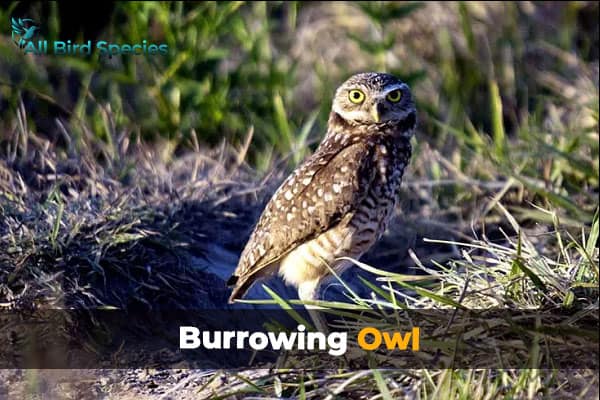
Nesting and Hunting Adaptations
The Burrowing Owl nests in burrows, not in trees. It uses old prairie dog or gopher holes. This keeps it safe from predators and lets it move easily.
These owls are small, about 9 inches tall and less than a pound. They lay 6 to 12 eggs at a time. The young ones leave home after six weeks. Adults make up to 17 different sounds, more than any other owl.
They move fast on the ground because of their long legs. They hunt for insects, lizards, birds, and rodents. Also, They can eat half their body weight in one meal. Grasshoppers and beetles are big parts of their diet.
Burrowing Owls live in places with short grass, like Louisiana and Texas. They are more active at night in winter and during the day in summer. This helps them find food and avoid danger.
Despite their ability to adapt, Burrowing Owls face challenges. In Canada, they are at risk and need nesting boxes to help them. Watching these owls teaches us about their survival in changing environments.
4. Eastern Screech Owl
• Scientific name: Megascops asio
• Size: Length 6.3-9.8 inches, wingspan 18-24 inches
• Weight: 4.3-8.6 ounces
• Lifespan: Up to 14 years in the wild, 20 in captivity
• Diet: Small mammals, birds, insects
In Louisiana’s diverse ecosystems, the Eastern Screech Owl is a standout. It’s known for its adaptable nature and striking appearance. Bird watchers are captivated by its bold personality and varied diet.
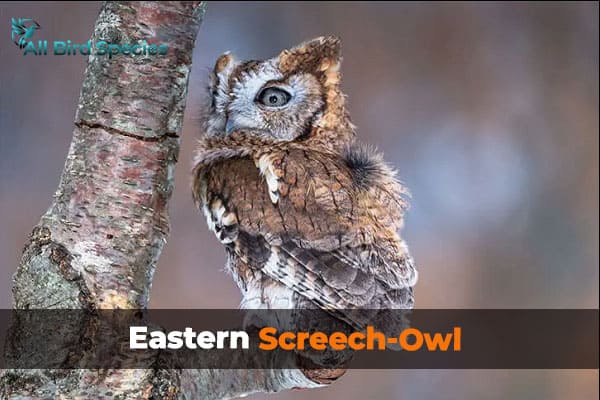
Color Morphs and Diet Diversity
The Eastern Screech Owl comes in two main colors: ashy gray and rufous-red. Sometimes, we see a mix of both, known as intermediate morphs. This color variety helps them blend in with different terrains.
These owls eat a wide range of foods. They enjoy small mammals, large insects, and even small fish. Their varied diet shows their resourcefulness and success in Louisiana’s suburbs and forests.
A Christmas Bird Count in 1982 found 112 Eastern Screech Owls in the Toledo area. This shows their stable numbers. They thrive in open areas with meadows, trees, and water, making them a vital part of the ecosystem.
5. Northern Saw-Whet Owl
• Scientific name: Aegolius acadicus
• Size: Length 7-8.3 inches, wingspan 16.5-18.9 inches
• Weight: 2.3-5.3 ounces
• Lifespan: Up to 7 years in the wild, 16 in captivity
• Diet: Small mammals, primarily mice
The Northern Saw-Whet Owl (Aegolius acadicus) is a unique part of Louisiana’s owl family. It’s not as common as others, but its looks and sounds make it special. It has cat-like features and a high-pitched call that sounds like a saw.

Bird lovers might see this owl during migration times. Finding it takes patience, but its nighttime hunting is intriguing. It mainly eats small mammals, playing a key role in the ecosystem.
Learning about the Northern Saw-Whet Owl deepens our respect for it. Its presence shows how crucial healthy environments are for owls and their food. Even a brief glimpse of this owl is a treasure.
6. Barred Owl
• Scientific name: Strix varia
• Size: Length 16-25 inches, wingspan 38-49 inches
• Weight: 1.1-2.3 pounds
• Lifespan: Up to 10 years in the wild, 23 in captivity
• Diet: Small mammals, birds, amphibians
The Barred Owl thrives in Louisiana’s unique ecosystem, finding its preferred habitat in swamps and forests. This remarkable bird stands out not only for its striking appearance but also for its distinctive call. The call resonates through the woodlands, often heard as “Who cooks for you? Who cooks for you all?”
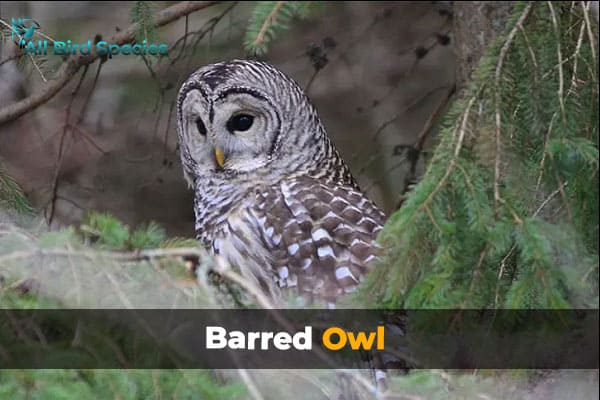
Such vocalizations play a pivotal role in communication and territory establishment. They are key to how these birds interact and mark their territory.
Distinctive Call and Behavior
In Louisiana, the Barred Owl is one of the most abundant owl species, especially in Baton Rouge. Researchers from Louisiana State University have caught and released around 50 Barred Owls. They used advanced GPS and very high frequency (VHF) tags to gather valuable movement data.
Each tag costs about $1,400. This research provides insight into the habitats and behavioral patterns of these owls.
The findings showcase remarkable stories, like that of an owl named Ragnar, who ventured from St. Gabriel to the LSU campus. Barred Owls rely on mature forests for hunting. Yet, they adapt well to varying woodland gradients.
Their diet mainly consists of small mammals. But they also eat a wide range of vertebrates and invertebrates.
The Barred Owl’s plumage, with its brown to gray coloring and dark striping, blends well into the forest. Subspecies variations lead to differences in coloration and physical traits. Despite being classified as Least Concern by the IUCN, the Barred Owl faces challenges as an invasive species on the west coast of North America. Understanding its ecology and behavior in our swamps and forests is crucial.
Owls in Louisiana: Spotting Tips and Locations
Spotting owls in Louisiana is exciting for both birdwatchers and newcomers. We can see these fascinating creatures by using good spotting tips and visiting the right places.
State parks like Fontainebleau State Park and Caddo Lake State Park are great for owls. They have wetlands, forests, and fields, perfect for spotting owls. Look for them at dusk and dawn, when they are most active.
Using binoculars helps us see owls from far away. Species like the Great Horned and Eastern Screech Owls can be seen in trees by lakes or rivers. It’s important to be quiet and patient to fully enjoy the experience.
Joining local Audubon societies is helpful for spotting owls. Members share tips on owl behavior and secret spots. This way, we can learn more and enjoy owl-watching events together.
Building an owl house can attract nesting owls. Place it 10 to 15 feet up to attract them. With effort and a keen eye, we can discover the wonders of our region while spotting owls.
Read More🐦Related Articles:
- Doves in Michigan
- Largest Birds of Prey
- Swallow Spiritual meaning
- Blue Colored Birds
- Hummingbirds in Maryland
Conclusion
Owls in Louisiana are key to our ecosystem, showing how wildlife thrives in the state’s varied habitats. As we learn more about these amazing birds, we find there’s still much to explore. Birdwatching responsibly helps us connect with nature and value conservation.
The need for conservation is urgent, as owls face threats from habitat loss and environmental changes. Each owl, from the Great Horned to the Northern Saw-Whet, needs specific homes that are at risk. By supporting conservation and raising awareness, we can help owls thrive in Louisiana for years to come.
Let’s work together to protect Louisiana’s birdlife through informed actions and respectful watching. Our efforts can greatly impact owl conservation and highlight the beauty of these night hunters. Every step we take to preserve their homes helps ensure a better future for all species in Louisiana.





